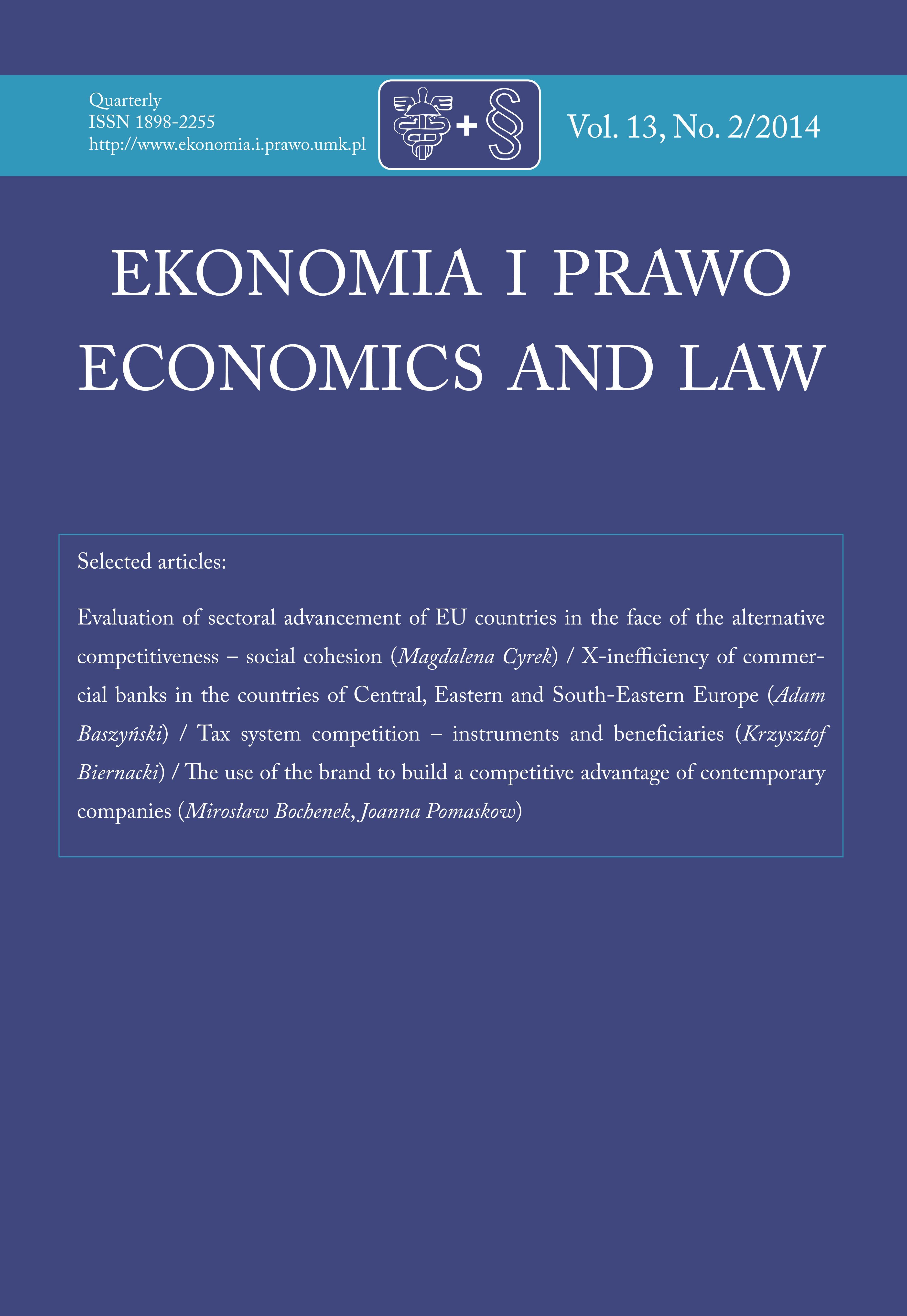X-INEFFICIENCY OF COMMERCIAL BANKS IN THE COUNTRIES OF CENTRAL, EASTERN AND SOUTH-EASTERN EUROPE
X-INEFFICIENCY OF COMMERCIAL BANKS IN THE COUNTRIES OF CENTRAL, EASTERN AND SOUTH-EASTERN EUROPE
Author(s): Adam BaszyńskiSubject(s): Economy, National Economy
Published by: Wydawnictwo Naukowe Uniwersytetu Mikołaja Kopernika
Keywords: cost efficiency; competition; bank
Summary/Abstract: It is sometimes attempted to measure the productive efficiency of the banking sector in a direct way. This approach uses the concept of X-inefficiency introduced by H. Leibenstein. In general, the X-inefficiency is the difference between efficient behaviour of the supplier and his real behaviour. One of the main reasons for the existence of X-inefficiency is the lack of competitive pressure, due to which the maximization of profit ceases to be a precondition of market survival. This may lead to wasting resources. X-inefficiency exists when the cost of the production of a given good by the supplier is bigger than the lowest possible cost of producing this good. The aim of the article is to specify the level of competition in the banking services markets in the countries of Central, Eastern and South-Eastern Europe (CESEE) with the use of the cost inefficiency of banks. For this purpose data concerning the cost-to-income ratio ( ) in 2005-2011 are used. The data come from the BankScope database. In the study the distance from the pattern method was applied. This article adopts the hypothesis that the level of efficiency of banks is far from the pattern one and inefficiency indicates the imperfectly competitive market structure.
Journal: Ekonomia i Prawo. Economics and Law
- Issue Year: 13/2014
- Issue No: 2
- Page Range: 259-274
- Page Count: 16
- Language: English

